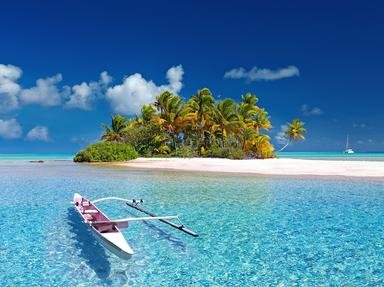
Living on an Island (Nation) Trivia Quiz
Ranking Island Countries
Island nations vary rather dramatically in size. This quiz asks you to rank the world's 11 largest - with some hints to help you along.
An ordering quiz
by LadyNym.
Estimated time: 3 mins.